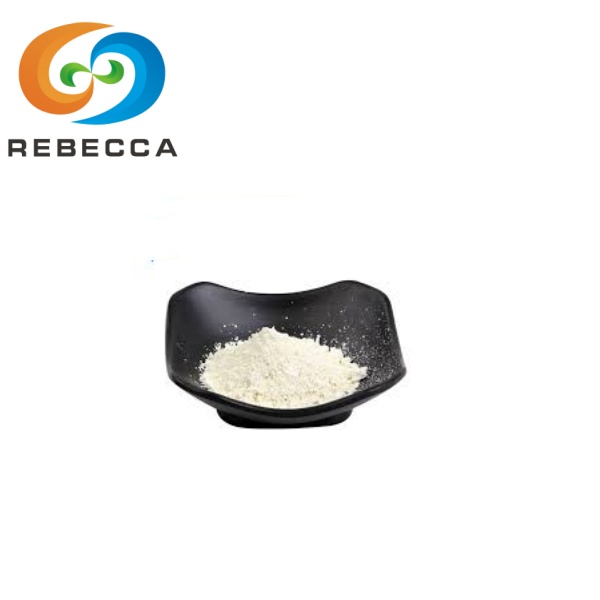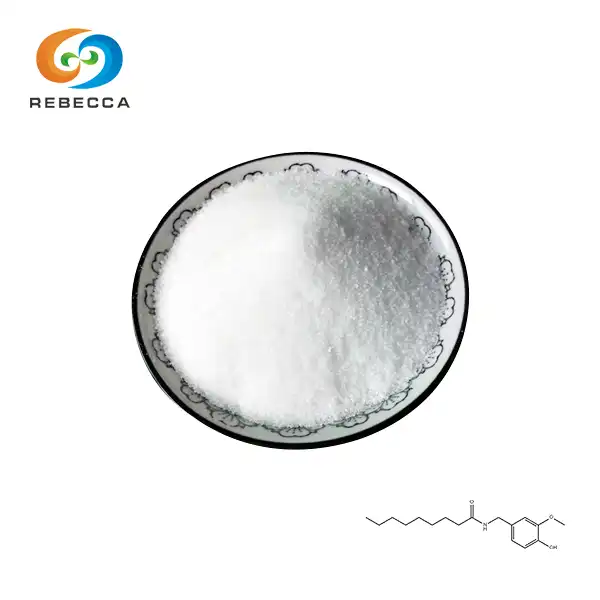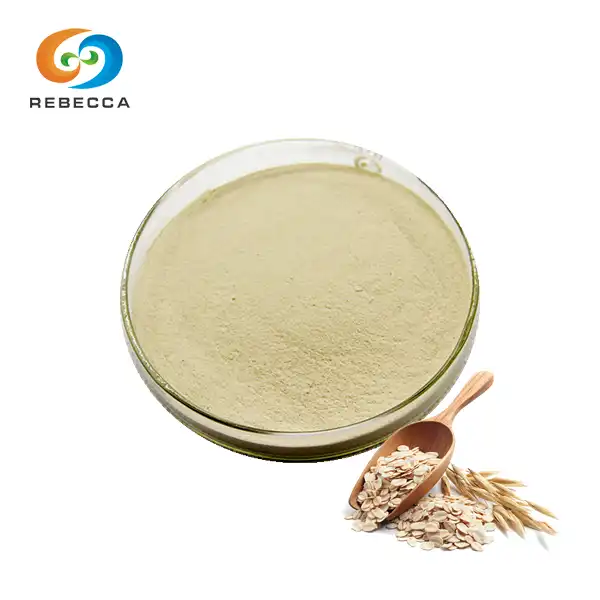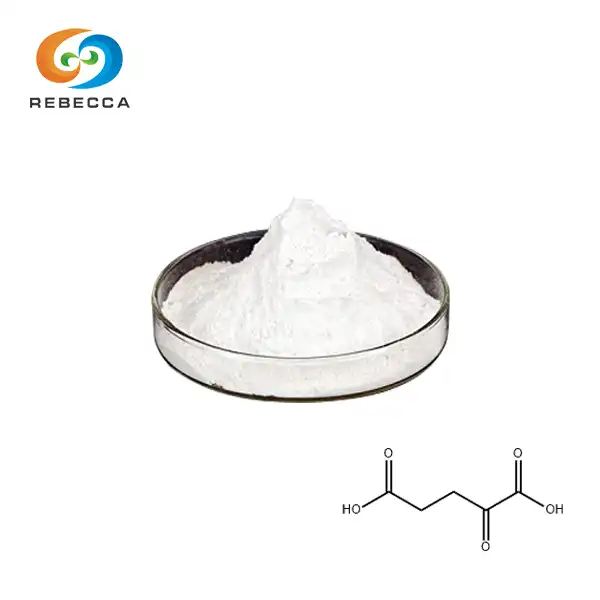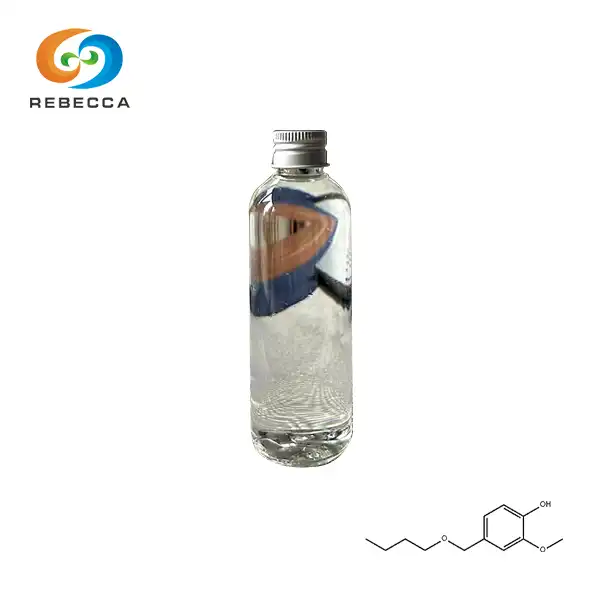Other Name:PIMAFUCIN
CAS No.: 7681-93-8
Purity:98%
Color:white or cream-yellow crystalline powder
Molecular Formula :C33H47NO13
Free Sample Available, MSDS Available
- Product Description
Natamycin: Natural Preservative for Food and Beverage Industry
What is Natamycin?
Natamycin—a nearly white or creamy yellow crystalline powder—is an odorless, tasteless, low-dose, and highly safe food preservative. Produced by controlled fermentation of Streptomyces natamycin, it is a white to milky white, odorless, and tasteless crystalline powder, typically existing in the enol form. Its mechanism of action is to bind to ergosterol and other sterol groups in fungi, inhibiting ergosterol biosynthesis and causing cell membrane distortion, ultimately leading to leakage and cell death. Using natamycin to surface-treat dough for baked goods significantly extends the shelf life.
Welcome to Shaanxi Rebecca Bio-Tech Co., LTD, your trusted manufacturer and supplier of high-quality Natamycin. Our state-of-the-art production facility and rigorous quality control measures ensure that we deliver premium Natamycin to meet the diverse needs of the food and beverage industry. With our commitment to innovation and sustainability, we provide a natural solution for extending shelf life without compromising on quality or safety.
Specifications of Natamycin
| Parameter | Specification |
|---|---|
| Appearance | White to cream-colored crystalline powder |
| Purity | ≥95.0% (HPLC) |
| Loss on Drying | ≤8.0% |
| pH (1% suspension) | 5.0 - 7.5 |
| Heavy Metals | ≤10 ppm |
| Arsenic | ≤3 ppm |
| Lead | ≤2 ppm |
| Mercury | ≤1 ppm |
| Particle Size | 90% through 40 mesh screen |
| Microbiological Limits | Total Plate Count <1,000 CFU/g |
| Yeast and Mold <100 CFU/g | |
| E. coli Negative in 25g | |
| Salmonella Negative in 25g | |
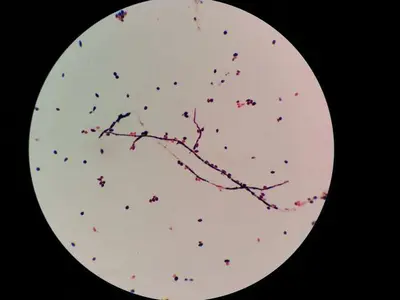
Source and Extraction
We source our Natamycin from carefully controlled fermentation of Streptomyces natalensis. Our advanced extraction process involves:
- Fermentation: Cultivating Streptomyces natalensis under optimal conditions.
- Filtration: Separating the Natamycin-rich broth from bacterial cells.
- Purification: Using cutting-edge chromatography techniques to isolate pure Natamycin.
- Crystallization: Forming high-purity Natamycin crystals.
- Drying: Carefully removing moisture to create a stable powder form.
Components
Pure Natamycin (C33H47NO13) with a molecular weight of 665.7 g/mol.
Functional Characteristics:
Broad-spectrum antifungal activity
Highly effective at low concentrations
Stable across a wide pH range (3-9)
Heat-resistant up to 50°C (122°F)
Does not affect taste, color, or odor of food products
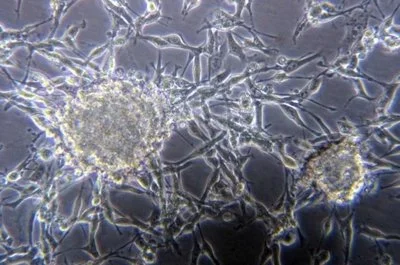

Uses:
- Surface treatment of hard and semi-hard cheeses
- Preservation of dairy products like yogurt and sour cream
- Extending shelf life of processed meats and sausages
- Protecting beverages from fungal spoilage
- Preventing mold growth in baked goods
Production Process:
Our Natamycin production adheres to strict GMP guidelines and includes:
- Strain selection and maintenance
- Controlled fermentation in sterile bioreactors
- Continuous monitoring of pH, temperature, and nutrient levels
- Harvesting and initial separation
- Multi-step purification process
- Quality control testing at each stage
- Final formulation and packaging in a clean room environment
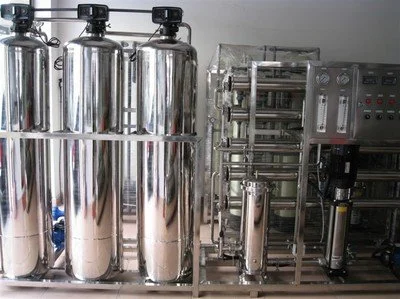
Natamycin Functions
1. Antifungal Effects
Natamycin is a polyene antifungal drug. Its mechanism of action is to react with sterol compounds on the fungal cell membrane to form antibiotic-sterol compounds, which disrupt the structure of the fungal cytoplasmic membrane, causing cell membrane distortion, ultimately leading to leakage and cell death.5 Natamycin has a strong inhibitory effect on most molds and fungi, but has no inhibitory effect on bacteria, viruses, and other microorganisms. It can be used to treat a variety of fungal diseases, such as fungal blepharitis, conjunctivitis, and keratitis.
2. Food Preservative Effects
Natamycin is a natural, broad-spectrum, highly effective, and safe inhibitor of filamentous fungi, including yeasts and molds. It not only inhibits fungi but also prevents the production of mycotoxins. Due to its low solubility, it is commonly used as a surface preservative for food. It can prevent food spoilage caused by molds and yeasts, reduce food recalls due to spoilage, and lower production costs. Natamycin can also effectively extend the shelf life of food. For example, adding an appropriate amount of natamycin to foods such as yogurt, meat products, and cheese can significantly extend their shelf life.
3. Improving Food Safety and Nutritional Value
Natamycin can prevent the growth of harmful microorganisms in food, thereby improving food safety. Furthermore, because it inhibits the production of mycotoxins, it can also enhance the nutritional value of food.
4. Replacing Traditional Chemical Preservatives
As a biological preservative, natamycin can replace traditional chemical preservatives such as sorbic acid, thereby reducing the use of chemicals in food.
Application Areas
Food Uses
Natamycin is a natural, broad-spectrum, highly effective and safe inhibitor of filamentous fungi, including yeasts and molds. It not only inhibits fungi but also prevents the production of mycotoxins. Natamycin is harmless to humans, poorly absorbed by the human digestive tract, and difficult for microorganisms to develop resistance to it. Furthermore, due to its low solubility, it is commonly used as a surface preservative for food products. It is a biological preservative.

Cheese
Natamycin prevents mold growth during cheese ripening, limiting the formation of mycotoxins. Because it has a low penetration rate and resides only on the surface, it is highly effective in controlling mold growth on cheese surfaces without affecting the ripening process. There are three specific application methods: 1) Spraying 0.05% to 0.28% natamycin on the surface of cheese products; 2) Soaking salted cheese in a 0.05% to 0.28% suspension for 2 to 4 minutes; 3) Adding 0.05% natamycin to the coating covering the cheese.
Cantonese Mooncakes
Mooncakes are rich in nutrients, but the crust, filling, and salted egg yolks are prone to mold. Natamycin has an excellent mold-preventing effect on mooncakes. Spraying is generally used: Prepare a 0.02% to 0.04% suspension of natamycin. After the mooncakes have cooled to room temperature after baking, spray the suspension on the sides and bottom of the mooncakes to prevent mold on the outside. Bake raw salted egg yolks until they are about 70% done, remove them from the oven, cool them, and soak them in a natamycin suspension for about 2 minutes to prevent mold in the filling.


Bakery and Pastry Products
Spraying a 100-500 ppm natamycin solution on the surface of baked goods such as cakes, white bread, and shortbread, or spraying natamycin on unbaked dough, provides excellent mold prevention and preservation without affecting the product's taste.
Meat Products
Dunking or spraying meat products with 4 mg/cm² of natamycin can achieve safe and effective mold prevention. Soaking sausage casings with a 0.05%-0.2% (w/v) natamycin suspension, or soaking or spraying the surface of stuffed sausages, effectively prevents mold growth. Grilled products such as roasted meat and roast duck, as well as dried fish, can also be sprayed with a 0.05%-0.1% (w/v) natamycin suspension to extend their shelf life.


Salad Dressing
Salad dressing is a high-fat food that often develops mold after the beginning of summer. Literature reports that adding 10ppm of natamycin to salad dressing resulted in no spoilage and no significant change in microbial counts during the test period. Salad dressing, similar to cheese, has a high fat content, and this study demonstrates that natamycin has a significant antibacterial effect on high-fat foods.
Soy Sauce
In summer, when temperatures are high, adding 15ppm of natamycin to soy sauce effectively inhibits yeast growth and reproduction, preventing the appearance of white blooms. Combining natamycin with nisin for mold prevention in soy sauce offers more effective antibacterial effects and reduces the inhibitory concentration.
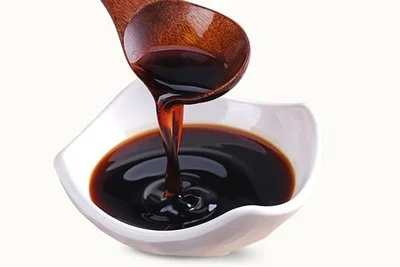

Beverages
Due to the high sugar and organic acid content in various fruit juices, they are ideal for yeast growth and reproduction, leading to spoilage. The use of natamycin can improve the storage stability of non-alcoholic beverages. For grape juice, applying 20ppm of natamycin can prevent fermentation caused by yeast contamination, and adding 100ppm completely terminates fermentation activity. Orange juice, due to fungal contamination under natural conditions, typically spoils within a week. However, by adding natamycin, even at a dosage as low as 1.25 ppm, it can maintain a shelf life of up to eight weeks when stored at 2°C to 4°C. The antibacterial effect of natamycin is related to storage temperature. For concentrated orange juice stored at 10°C, 10 ppm can inhibit yeast growth; at room temperature, 20 ppm is required to achieve antibacterial activity. In apple juice, 30 ppm of natamycin can prevent fermentation for up to six weeks without altering the juice's flavor. In tomato juice, 70 mg/kg of natamycin has a strong mold-preserving and freshness-preserving effect.
Others
Using natamycin in rice cakes and steamed buns prevents mold and effectively extends shelf life. In condiments like vinegar, natamycin prevents spoilage caused by mold and yeast. In beer and wine, 2.5 mg/kg of natamycin significantly extends shelf life. In addition, adding 5-10 ppm of natamycin to yogurt can extend the shelf life of the product by more than 4 weeks.

Packaging and Transportation
Our product is packaged in food-grade, air-tight containers that maintain product integrity during transport. Available in customized quantities based on client needs, we ensure timely and secure delivery across global destinations.

Qualification Certification
Our Natamycin adheres to GMP standards and other relevant certifications required by international markets, ensuring compliance with safety and regulatory guidelines.

FAQ
Q1: Is Natamycin safe for consumption?
A1: Yes, Natamycin is considered safe for consumption and is approved by regulatory agencies worldwide, including the FDA and EFSA.
Q2: How long does Natamycin remain effective in food products?
A2: Natamycin's effectiveness can last for several weeks to months, depending on the application and storage conditions.
Q3: Can Natamycin be used in organic products?
A3: Yes, Natamycin is allowed in certain organic products, but regulations may vary by country and certification body.
Q4: Does Natamycin affect the taste of food?
A4: No, Natamycin does not alter the taste, color, or odor of food products when used at recommended levels.
Q5: How should Natamycin be stored?
A5: Store Natamycin in a cool, dry place away from direct sunlight. Once opened, keep it in an airtight container.
Q6: Is Natamycin effective against bacteria?
A6: Natamycin is specifically effective against fungi and yeasts, but not against bacteria.
Contact Us
For more information about our Natamycin products or to discuss your specific needs, please contact us at information@sxrebecca.com. Our team of experts is ready to provide you with tailored solutions and technical support.
_1730691017423.webp)

